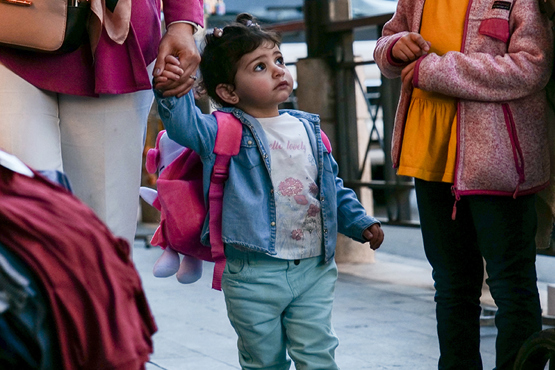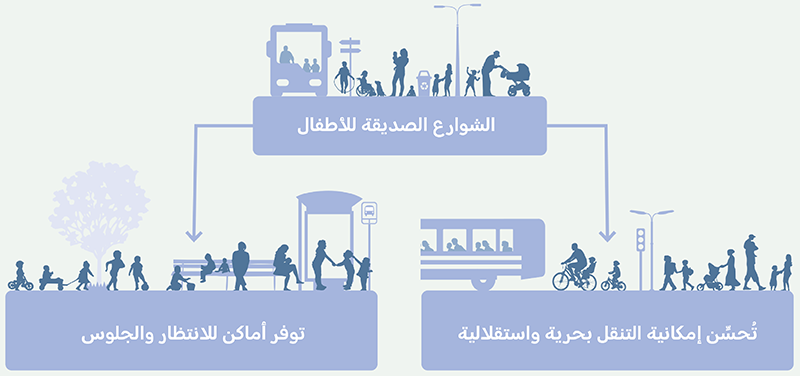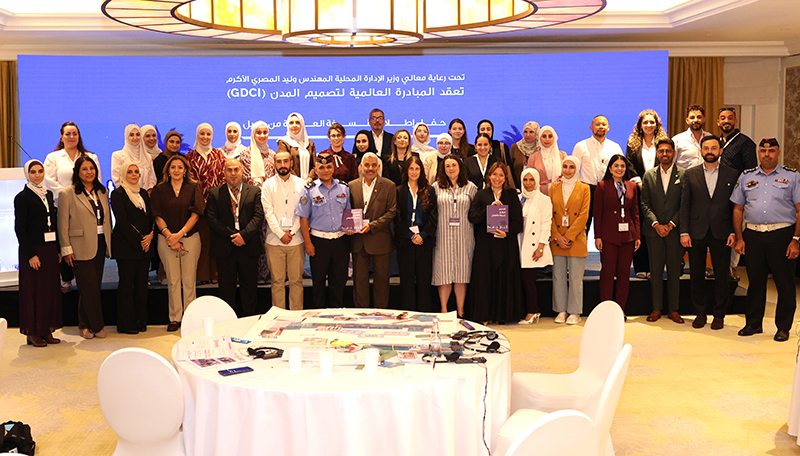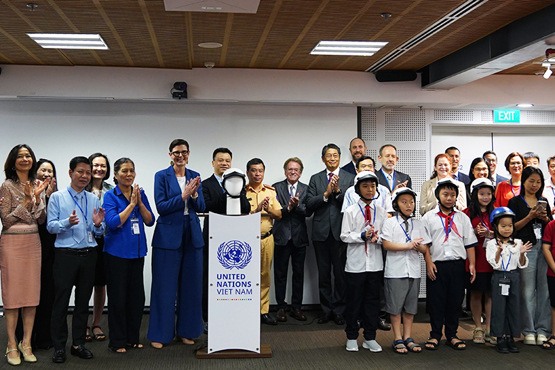Designing Streets for Kids launches in Arabic, supported by the FIA Foundation

The Designing Streets for Kids guide translation in Arabic has been launched by Global Designing Cities Initiative (GDCI) in Amman, Jordan, with the support of the Van Leer Foundation and the FIA Foundation.
Arabic is spoken by more than 400 million people across 22 countries in the Middle East and North Africa (MENA), making it the fifth-most-spoken language worldwide. Almost half of the population in MENA is under 24, making the guide particularly pertinent. Additionally, many Middle Eastern cities have rapidly urbanised, often prioritising car-centric infrastructure, limiting options for safe movement and raising concerns about chronic health issues linked to air pollution and sedentary lifestyles.
The guide serves as a valued roadmap for creating holistic, child-centred and child-influenced street redesigns. It provides practical guidance for key areas, including school zones, neighbourhood streets, and high-traffic environments.

Used worldwide by cities from Cuenca, Ecuador, to Kuala Lumpur, Malaysia, Designing Streets for Kids addresses the critical issues that children face from birth through their teenage years. The guide equips cities with the tools to ensure equitable access to education, opportunities, and public life, while improving overall well-being through proven community- and kid-driven street redesigns, policies, and strategies. Designing Streets for Kids helps planners and practitioners consider safe and active ways for children to both reach school and join healthy activities in playgrounds, parks and libraries. The designs support more active mobility, promoting cleaner air, stronger community connections, greater resilience, and more opportunities for kids to learn and play along each journey.
"Guidance in Designing Streets for Kids aligns with the ministry's efforts to create safer and more inclusive urban environments for children, which is integral to the ministry's vision to improve quality of life and urban services across Jordanian cities," said Nidal Abu Arabi, secretary-general of the Ministry of Local Administration. "The guide's availability in Arabic provides a valuable opportunity to support city development and quality of life enhancement."
"Too many children in Jordan are not playing and exploring outside enough because their families worry about safety and road traffic," said Farah Jadallah, Jordan representative at the Van Leer Foundation. "This reality is shared by many children and parents across the Arab World. The Arabic guide of Streets for Kids gives cities like Amman, Irbid and Aqaba in Jordan a roadmap on how to transform streets into safe environments that encourage connection and learning. Street by street - this is the way forward for creating better cities, healthy families and prosperous societies."

With 24,000 downloads, Designing Streets for Kids is known for its visually powerful renderings and before-and-after photos featured in 62 case studies and snapshots from 48 cities across the globe. The guide also shows how to engage children throughout the planning process—an often-overlooked approach that can dramatically transform how streets are designed and used.
"Reliable mobility options and access to safe, healthy streets is a human right, and Designing Streets for Kids provides actionable strategies for ensuring equitable access to these vital public spaces," said Skye Duncan, executive director of GDCI. "With the Arabic translation of this award-winning publication, millions more people across the globe can access this information in their native language, helping to ensure that more kids not only survive, but thrive on their local streets."
Speaking at the launch event, Atsani Ariobowo, Director, Child and Youth Health, said: "Our streets are our largest public space. They shape how we move, meet, learn, and breathe. When streets feel safe for a six-year-old walking to school with a sibling, a grandparent with a cane, or a parent pushing a stroller, then the same streets become safer, healthier, and more welcoming for all of us. Around the world, road crashes are still a leading threat to children and young people. The guide shows how to make danger the exception, not the rule, through slower speeds, clearer crossings, and engineering designs that protect the most vulnerable."

Main photo credit: Alexis Camejo/Van Leer Foundation



